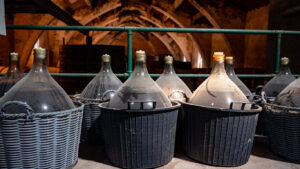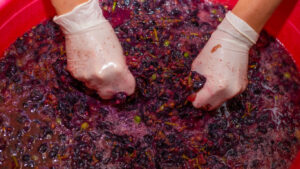Wine is one of humanity’s oldest beverages. Since ancient times, it has been crafted by hand in homes, monasteries, and small family wineries. Today, technology has professionalized production, but there are still those who wonder whether it’s possible to make wine at home safely and with more than just acceptable results.
The answer is yes: making homemade wine is possible, as long as certain hygiene precautions are followed and it’s understood that it won’t be the same as commercial wine. In this article, we explain what’s needed to make wine at home, what legal requirements to consider, and what tips can help make the experience rewarding.
The foundation of any wine consists of two fundamental elements: ripe grapes and time. But beyond these essential ingredients, a few basic materials are also required.
Among the basic tools are (depending on how simple or complex you want to make it):
Fermentation vessel: This can be a food-grade bucket, a barrel, or a stainless-steel tank. It must be thoroughly cleaned and disinfected.
Destemmer and crusher: Used to separate the stems and lightly crush the grapes. If making a small amount, this can be done by hand.
Airlock or fermentation valve: Prevents air from entering while allowing fermentation gases to escape.
Press: To separate the must from the skins once fermentation is complete. Not essential for small quantities.
Glass carboys or demijohns: For clarification and resting of the wine.
Siphon or food-grade hose: To rack the wine without mixing it with sediment.
Thermometer and hydrometer: Useful tools to monitor temperature and potential alcohol level.
Barrels (optional): Can add aromas and complexity.

Although each method may vary, the home process usually follows these stages:
Grape selection: The quality of the raw material will determine the final result. Grapes must be healthy and ripe.
Crushing and destemming: The berries are broken to release the juice, and the stems are removed.
Alcoholic fermentation: Yeasts transform sugars into alcohol and carbon dioxide. This process lasts between 7 and 15 days, depending on temperature and grape variety.
Aging in barrels (optional): If you have a small barrel, you can let the wine rest for weeks or months to add notes of wood, vanilla, or spices, among others.
Pressing and separation of solids: When making red wine, the skins are kept during fermentation to extract color and tannins.
Racking: The wine is transferred between containers to remove sediments and impurities.
Clarification and resting: The wine stabilizes and matures for several months.
Bottling: Finally, it can be filtered if desired and bottled.
In Spain and other European countries, making wine at home for personal consumption is not prohibited if produced in small quantities and not sold. However, it’s advisable to check regional regulations and meet food safety standards.
If you plan to produce more than a few hundred liters or sell your wine, you’ll need a health permit and registration as a producer.
Advantages:
You learn the process from start to finish.
You can experiment with grape varieties, fermentation styles, and aging times.
It’s an activity that connects you to tradition and manual craftsmanship.
Disadvantages:
Temperature control is difficult without professional equipment.
Hygiene is crucial: contamination can ruin an entire batch.
Homemade wine tends to be less stable and can change over time.
Homemade wine rarely has the clarity, stability, and complexity of commercial wine. However, when done well, it can be pleasant, express the grape variety, and surprise with its rustic character. Its taste will depend on factors such as:
The ripeness of the grapes.
Cleanliness at every stage.
Maceration time.
The type of aging container (glass, wood, clay, steel, demijohn, etc.).
Many enthusiasts compare its flavor to traditional “pitarra” wine: honest, direct, and full of personality.

If you’d like to give it a try, keep these tips in mind:
Start with a small quantity — 10 to 20 liters is enough to learn.
Use good-quality grapes, ideally from a known vineyard.
Disinfect all equipment with metabisulfite or specific cleaning products.
Control fermentation temperature — ideally between 18°C and 24°C (64°F–75°F).
Be patient — wine needs time to settle.
Don’t hesitate to consult homemade winemaking manuals or specialized forums.
Making wine at home is an experience that teaches you to appreciate every bottle you open. Even if it’s not always easy to achieve a perfect result, the process itself offers a way to understand wine culture from the inside.
If you’re looking for a traditional and hands-on hobby, making your own wine can be a truly exciting challenge.
¿Te ha gustado este artículo?